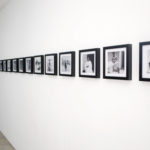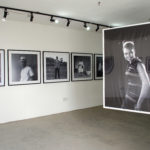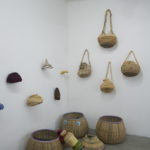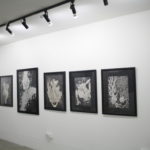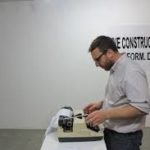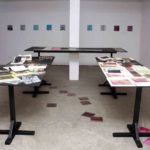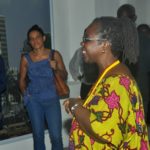I am in the space. The journey to the location exhausted me. I came against other people’s better judgment. I find I am only able to assimilate. I get confused in the bid to confront the drawing surface.
Bisi Silva is here. We discuss how the mind and body have to be in sync to perform practical functions. There may be a place for the theory of chaos in the assessment of the thought process and its place in this drawing.
I look at the collection of the thought machinery and how it attracts and generates images in the mind drawn from both immediate influence and archives of the memory. It is like a magnetic field that in trying to pick a metal pin in a stack of pins and how the result is such that a whole slew of pins get to come along for the ride. Thought triggers memory and imagination. It would be the resonance of thought? Like how Friedrich Niestzche describes it, “Resonance. All intense moods bring with them a resonance of related feelings and moods; they seem to stir up memory. Something in us remembers and becomes aware of similar states and their origin. This habitual, rapid associations of feelings and thoughts are formed, which, when they follow with lightning speed upon one another, are eventually no longer felt as complexes, but rather as unities. In this sense, one speaks of moral feelings, religious feelings, as if they were all unities; in truth they are rivers with a hundred sources and tributaries, As is so often the case, the unity of the word does not guarantee the unity of the thing.” (Human, All Too Human, p.22.)
Would the concept of the drawing be called morphological?


